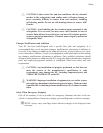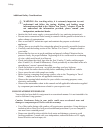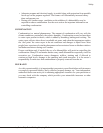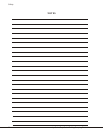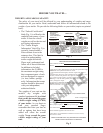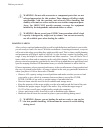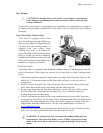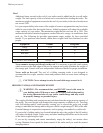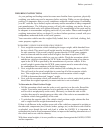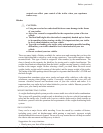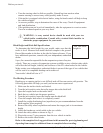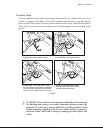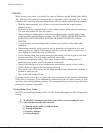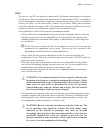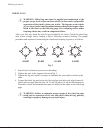
WEIGHING INSTRUCTIONS
As your packing and loading routine becomes more familiar from experience, physically
weighing your trailer may not be necessary before each trip. While you are developing a
process, it is imperative that you verify compliance within the weight ratings. Overloading
your RV voids the Jayco limited, express warranty and the warranties of many component
part manufacturers. The following process will aid with weighing your trailer. Keep in
mind that individual scales will operate differently. The surroundings of the scale need to
be adequate to accommodate weighing each side of your trailer. Please read through all
weighing instructions before you begin. If you have further questions, consult with your
independent, authorized dealer or the scale operator.
Your recreation vehicle must be weighed fully loaded, that is, with food, clothing, fuel,
water, propane, supplies, etc.
TO PROPERLY WEIGH YOUR RECREATION VEHICLE
1. First, weigh the recreation vehicle including the tongue weight, while detached from
the tow vehicle. This actual overall weight must be less than or equal to the GVWR
for safe operation. If the overall weight is greater than the GVWR, some contents
must be removed until the actual overall weight is less than or equal to GVWR.
2. Next, hitch the recreation vehicle to your tow vehicle. Weigh the recreation vehicle
and the tow vehicle to determine the GCW. Make sure that this rating is less than or
equal to the GCWR as specified by the manufacturer of your tow vehicle. If this
overall weight is greater than the GCWR, some contents must be removed to bring
the combination into compliance with the listed ratings.
3. Next, weigh the recreation vehicle, while attached, but excluding the tow vehicle.
This will result in the actual weight that is exerted on all of the recreation vehicle
tires. This weight may be subtracted from the overall recreation vehicle weight
GVWR to determine the actual “tongue” weight.
4. Next, with the recreation vehicle still attached to the tow vehicle, each wheel position
should then be weighed separately to ensure each tire is not overloaded.
To Determine the Wheel Position Weight
• Pull the recreation vehicle onto the scale so only one tire is on the scale. Record the
weight. Your trailer must remain as level as possible on the scale (even though an
axle or side is not physically on the scale). Obviously, to obtain the side-to-side
weights, there must be enough space on either side of the scale to accommodate the
recreation vehicle being partially off the scale.
• To calculate the opposite side of the vehicle wheel position weight, subtract the first
side’s weight from the weight determined in step #3.
If there is a difference in the weights on one side of the vehicle as compared to weights on
the other side, components (tires, wheels, brakes, springs, etc.) on the heavier side could be
overloaded, even though the total axle load is within the GAWR. It is important to
redistribute the load to avoid component failure, to improve the handling characteristics of
the vehicle and to not void the warranty.
With these actual weights, it is now possible to compare them against the GAWR, GVWR
and tire capacities.
Jay Series/Baja/Select Folding Camping Trailer 27
Before you travel...



